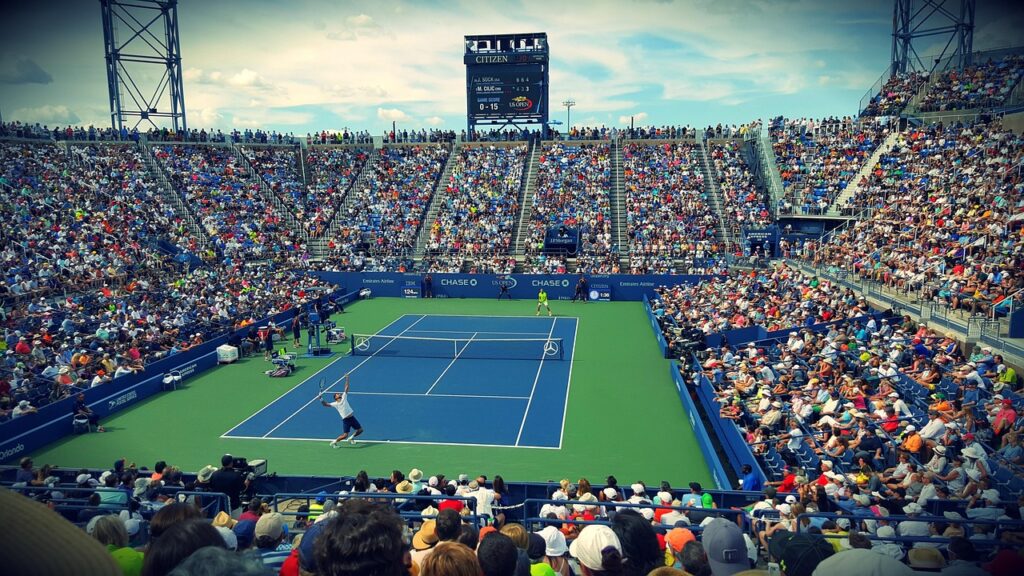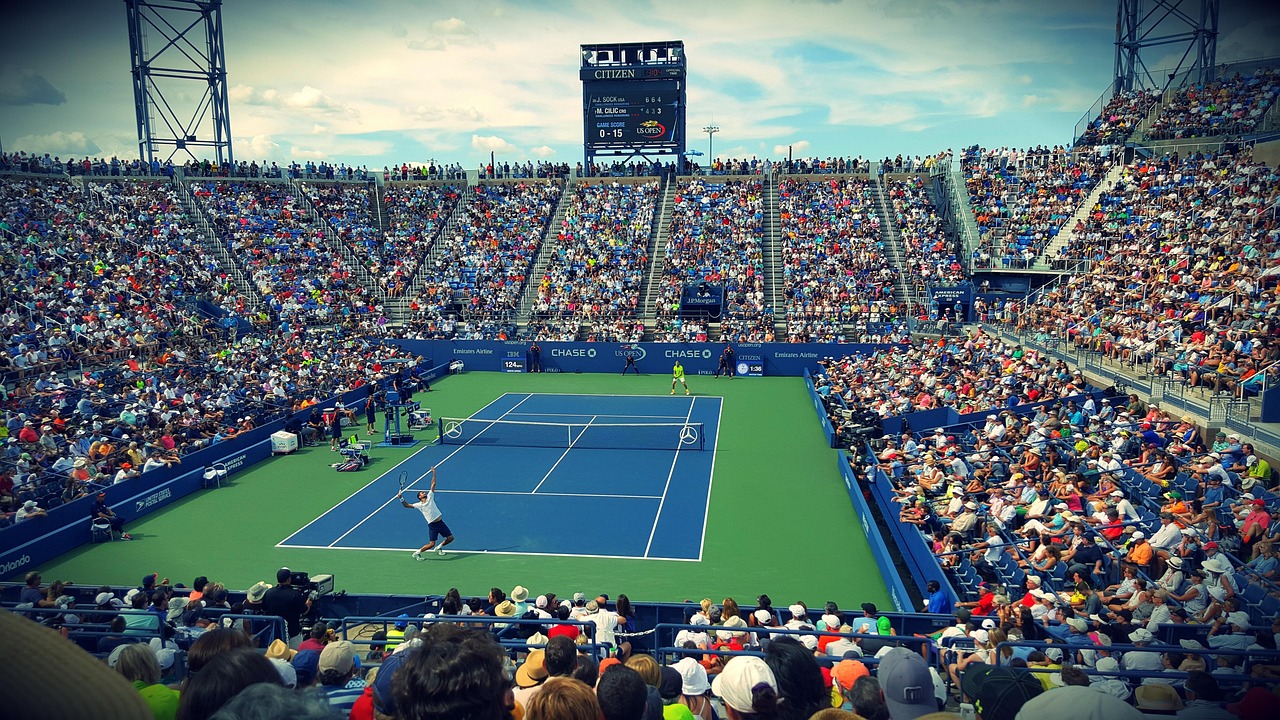Tennis stands as one of the world’s most dynamic racket sports, where success depends not only on athletic prowess and technical mastery but also on understanding the unique characteristics of different types of tennis court surfaces.
Each tennis court surface presents distinct challenges that can dramatically influence match outcomes, playing strategies, and even the career trajectories of professional athletes. From the pristine grass courts of Wimbledon to the clay battlegrounds of Roland Garros, understanding these surface variations is crucial for any tennis enthusiast looking to elevate their game comprehension and court performance.
The surface beneath a player’s feet serves as more than just a foundation; it becomes a strategic element that can make or break championship dreams. Professional players often specialize in specific surfaces, developing playing styles that maximize their effectiveness on particular court types.
This comprehensive exploration will decode the mysteries of tennis court surfaces, examining how each type influences ball behavior, player movement, and tactical approaches that separate champions from competitors.
The Science Behind Tennis Court Surface Classification

The International Tennis Federation (ITF) has established a sophisticated classification system that categorizes tennis court surfaces based on their speed characteristics, ranging from slow (Category 1) to fast (Category 5). This scientific approach helps players, coaches, and tournament organizers understand how different surfaces will impact gameplay dynamics and strategic considerations.
Surface speed directly correlates with ball behavior after impact. Faster surfaces allow the ball to maintain velocity and produce lower bounces, while slower surfaces reduce ball speed and generate higher bounces. These fundamental differences create entirely different playing environments that reward specific skill sets and tactical approaches.
The ITF’s classification system considers multiple factors including surface friction, ball deformation upon impact, and energy absorption characteristics. This standardization ensures consistency across professional tournaments and helps maintain competitive integrity throughout the global tennis circuit.
Different Types of Tennis Court Surfaces
1. Grass Tennis Courts
Grass tennis courts represent tennis in its most traditional form, embodying the sport’s aristocratic origins when it was played on manicured lawns of British estates.
These natural surfaces remain the signature feature of prestigious tournaments, most notably The Championships at Wimbledon, which stands as tennis’s most revered venue.
Advantages
Grass courts produce the fastest playing conditions in professional tennis, creating a unique environment where matches can be decided by minimal margins. The ball travels with exceptional speed across the surface, maintaining velocity while producing characteristically low bounces that challenge even the most seasoned professionals.
The natural fiber composition of grass courts creates unpredictable bounce variations that test players’ reflexes and adaptability. These inconsistencies, while sometimes frustrating, add an element of tactical uncertainty that rewards quick thinking and exceptional court positioning. Players must approach each point with heightened awareness, as bad bounces can instantly shift momentum.
Disadvantages
Maintaining grass courts requires year-round dedication and expertise from specialized groundskeeping teams. The famous Wimbledon grounds crew begins preparation immediately after each tournament concludes, implementing comprehensive maintenance programs that include reseeding, rolling, cutting, and weather protection protocols.
Weather conditions significantly impact grass court playability. Rain creates slippery conditions that can become dangerous for players, leading to frequent match delays and court covering procedures. Extreme heat can dry out the grass, creating uneven surfaces that affect ball bounce consistency and overall playing quality.
The intensive maintenance requirements make grass courts financially prohibitive for most recreational facilities, limiting their availability primarily to elite tournament venues and exclusive private clubs. This scarcity contributes to the mystique surrounding grass court tennis and explains why many professional players struggle to adapt to this unique surface.
Grass Court Specialists and Playing Styles
Success on grass courts traditionally favors players with aggressive serving games and strong net-play abilities. The fast surface conditions reward players who can finish points quickly, making serve-and-volley tactics particularly effective. Big servers gain significant advantages, as the low bounce makes service returns more challenging.
Roger Federer’s dominance at Wimbledon exemplifies grass court excellence, with his eight championship titles demonstrating how technical precision and tactical awareness translate to success on natural surfaces. His ability to move efficiently on grass while maintaining balance during rapid direction changes showcased the specific athletic skills required for grass court mastery.
2. Clay Tennis Courts
Clay tennis courts, constructed from crushed brick, shale, or stone materials, create the slowest playing conditions in professional tennis. These surfaces fundamentally alter game dynamics, emphasizing endurance, strategic thinking, and specialized shot-making abilities over raw power and aggressive net play.
Advantages
The loose mineral composition of clay courts significantly reduces ball speed upon contact, allowing players additional reaction time while generating higher, more predictable bounces. This characteristic transforms tennis into a more tactical sport where patience, consistency, and strategic shot placement take precedence over explosive power.
Red clay courts, prevalent throughout Europe and South America, utilize crushed brick materials that create the distinctive reddish appearance associated with prestigious tournaments like the French Open. Green clay courts, found primarily in North America, use crushed metabasalt materials and play slightly faster than their red counterparts.
The surface’s ability to absorb impact energy reduces stress on players’ joints, making clay courts more forgiving for long-term physical health. This joint-friendly characteristic allows players to engage in extended rallies without experiencing the harsh impact associated with harder surfaces.
Disadvantages
Clay court tennis rewards patient, strategic gameplay over aggressive shot-making. The slower conditions allow defensive players to retrieve seemingly impossible shots, extending rallies and testing opponents’ mental fortitude. Success requires exceptional physical conditioning, as matches often extend beyond three hours.
Topspin becomes a crucial weapon on clay courts, as the high bounce amplifies the ball’s upward trajectory, pushing opponents back from the baseline and creating opportunities for attacking shots. Players must develop specialized footwork techniques, including the famous clay court slide, to maintain balance while changing directions on loose surface materials.
Drop shots and angled placements become particularly effective tactical weapons, as the slower surface makes it difficult for opponents to reach short balls. Strategic court positioning and shot selection often determine match outcomes more than raw power or serving ability.
Clay Court Champions and Specialized Skills
Rafael Nadal’s unprecedented dominance on clay courts, with 14 French Open titles, demonstrates the specialized skills required for success on this surface. His extreme topspin forehand, defensive capabilities, and mental toughness epitomize clay court excellence. The physical demands of clay court tennis require exceptional cardiovascular fitness and muscular endurance.
Clay court specialists often struggle on faster surfaces, highlighting how specialized training and technique development can create surface-specific advantages. Players like Guillermo Vilas, Björn Borg, and Chris Evert built legendary careers primarily through clay court mastery, demonstrating how surface specialization can lead to championship success.
3. Hard Tennis Courts
Hard tennis courts have emerged as the most prevalent surface in professional tennis, featuring in prestigious tournaments including the US Open and Australian Open. These synthetic surfaces provide consistent playing conditions that balance speed and bounce characteristics, creating an environment that rewards well-rounded playing styles.
Advantages
Modern hard courts utilize advanced synthetic materials layered over concrete or asphalt foundations. Acrylic surface treatments provide consistent texture and color while offering customizable speed characteristics. Tournament organizers can adjust surface properties by modifying sand content and surface preparation techniques.
The rigid construction creates higher bounces compared to grass while maintaining faster playing speeds than clay. This combination produces longer rallies than grass court tennis while preventing the extreme endurance demands associated with clay court matches.
Surface consistency represents hard courts’ primary advantage, eliminating the unpredictable bounces common on natural surfaces. Players can develop consistent timing and positioning strategies, knowing that ball behavior will remain predictable throughout matches.
Disadvantages
Hard courts favor well-rounded players who excel in multiple aspects of tennis. The balanced speed characteristics reward both aggressive net players and defensive baseline specialists, creating tactical variety that showcases different playing styles within single matches.
Serving maintains significant importance on hard courts, though not to the extreme degree seen on grass. Return of serve becomes more feasible due to higher bounces, creating more competitive service games and reducing the likelihood of quick service holds.
The surface’s unforgiving nature places premium emphasis on shot placement and consistency. Unlike clay courts where players can slide into defensive positions, hard courts require precise footwork and quick direction changes that test athletic conditioning and movement efficiency.
Hard Court Versatility and Global Accessibility
Hard courts’ low maintenance requirements and weather resistance make them ideal for both professional tournaments and recreational facilities. Indoor hard courts eliminate weather concerns entirely, allowing year-round play regardless of climate conditions.
The surface’s durability and cost-effectiveness have made hard courts the standard choice for tennis facilities worldwide. This accessibility allows players to develop skills on surfaces that mirror professional tournament conditions, creating better preparation for competitive play.
4. Artificial Grass Courts
Artificial grass surfaces represent technological advancement in tennis court construction, offering grass-like playing characteristics without the intensive maintenance requirements of natural surfaces.
These synthetic alternatives provide consistent playing conditions while maintaining the fast-paced gameplay associated with traditional grass courts.
Advantages
Modern artificial grass utilizes advanced fiber technology that replicates natural grass appearance while providing consistent ball bounce and player traction. The synthetic construction eliminates weather-related playability issues while maintaining the low-bounce characteristics that define grass court tennis.
Surface consistency represents artificial grass’s primary advantage over natural grass, eliminating the unpredictable bounces that can frustrate players and spectators. Ball behavior remains predictable throughout matches, allowing players to develop consistent timing and tactical approaches.
Artificial grass courts require minimal maintenance compared to natural grass, making them viable options for recreational facilities and training centers. The surface provides an excellent learning environment for players developing grass court skills without access to traditional grass facilities.
Many tennis academies utilize artificial grass courts to expose students to fast-surface playing conditions year-round. This accessibility helps develop the specific skills required for grass court success while maintaining practical facility operation.
Tournament Strategy and Surface Specialization
Professional players often schedule their competitive calendars around surface preferences, focusing peak fitness and form on tournaments played on their preferred surfaces. Clay court specialists may limit grass court participation to preserve energy for important clay court events.
Surface transitions require adjustment periods where players adapt technique and tactics to different playing conditions. Many professionals struggle during surface change periods, highlighting the specialized nature of surface-specific skills.
Equipment selections often vary between surfaces. Racket string tensions, shoe selections, and even clothing choices may change based on surface requirements. These details demonstrate the comprehensive nature of surface-specific preparation.
Wrapping Up: The Future of Tennis Court Surfaces
Technological advancement continues driving innovation in tennis court surface development. Manufacturers research new materials that could provide improved playing characteristics while reducing maintenance requirements and environmental impact.
Sustainability concerns influence modern court construction, with manufacturers developing eco-friendly surface options that maintain performance standards while reducing environmental footprint. Recycled materials and renewable surface treatments represent growing trends in court construction.
Climate change impacts may influence future surface selections, as extreme weather events become more frequent. Surfaces that maintain playability despite temperature fluctuations and weather challenges may gain popularity among tournament organizers.
